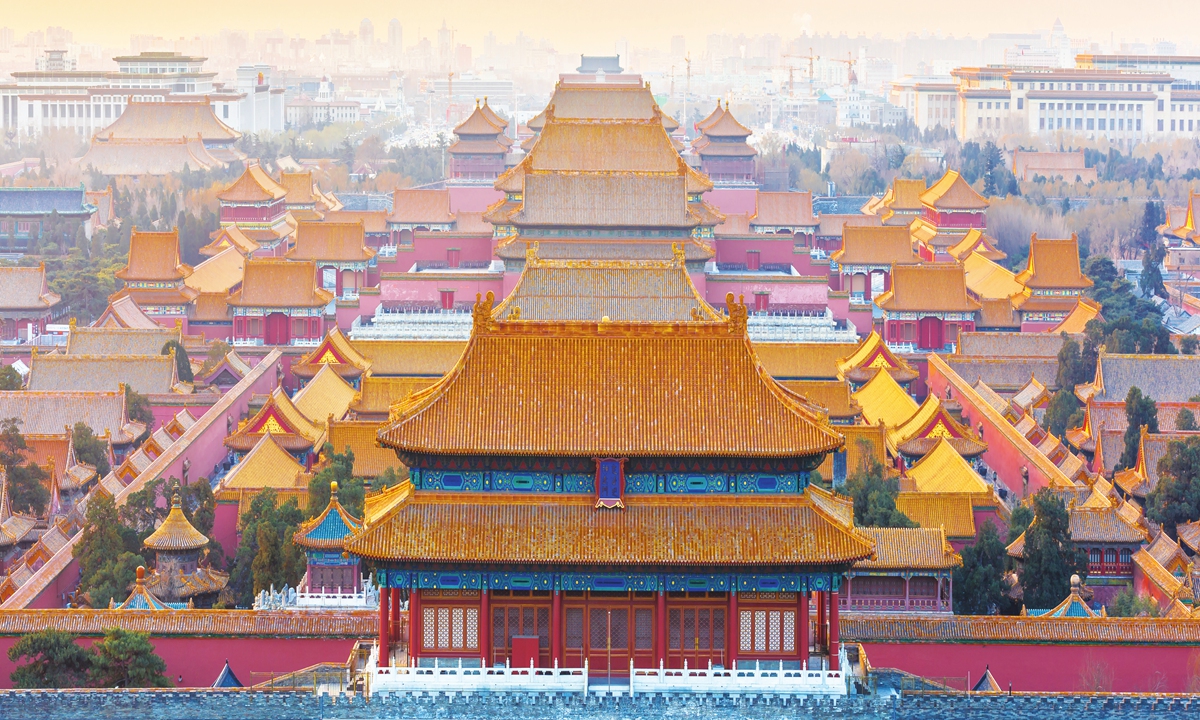ARTS / CULTURE & LEISURE
Plan of Beijing Central Axis' conservation starts, clarifying boundaries of protected area for the first time

The Forbidden City, which lies along Beijing's Central Axis Photo: VCG
The plan of conservation and management of Beijing Central Axis was published and started being carried out on Saturday: the plan divides the protection area of the Central Axis into an heritage area and a buffer zone and defines the specific boundaries of the area for the first time, in order to protect the ancient capital's cultural treasures.
The Beijing Municipal Cultural Heritage Bureau published the plan spanning from 2022 to 2035, noting that the Central Axis, seen as one of the most important representations of Chinese civilization, refers to the core area of the ancient capital city that stretches 7.8 kilometers from the Yongding Gate in the south to the Bell Tower and Drum Tower in the north, covering several significant landmarks of the ancient capital including Tian'anmen Square and the Palace Museum.
The heritage area covering 5.9 square kilometers consists of 15 core heritage sites and their connected zones and the buffer area covers a wider area, including places around the heritage area and closely linked to the formation and development of the Central Axis, with a total area of about 45.4 square kilometers.
The buffer zone contains historical river courses, ancient streets and historical cultural blocks, which are closely related to the Central Axis and can show the traditional landscape of the city.
The bureau emphasized that the plan is one of the necessary elements for Beijing Central Axis to apply for World Cultural Heritage. Its publication and implementation will play a role as foundation for the effective protection of Beijing Central Axis cultural heritage, and can provide direction, strategy and basis for the management work of the Central Axis.
Carrying out the plan not only aims at better protecting the Central Axis but also at taking a broader view on preserving the historical landscape and cultural relics of the whole ancient city.
The Wanning Bridge that was built during the Yuan Dynasty (1279-1368) is located in the area of the Central Axis. It was initially a wooden bridge, but was later rebuilt into a white marble stone arch bridge with white marble guardrails carved with lotus-vase patterns.
In the plan, the ancient bridge has also been taken into key conservation and the authorities have been carrying out protection and restoration projects. Measures such as traffic flow restriction and vehicle weight restriction are being taken to reduce traffic pressure and the load of the Wanning Bridge.
To make sure that protection and restoration projects won't damage the ecological environment along the Central Axis, the authorities have also focused on environmental improvement around the Zhengyang Gate.
The heritage area and the buffer zone are areas where urban population is highly concentrated, so balancing the relations of residents' life and conservation cultural relics is one of the most important goals of the plan.
An app has also been launched: users can scan the QR code on sites along the central axis to see the place both as it is now and how it was hundreds of years ago, as well as listen to interesting stories about the Central Axis.
The whole 7.8-kilometer-long Central Axis will also be digitally restored in VR.


